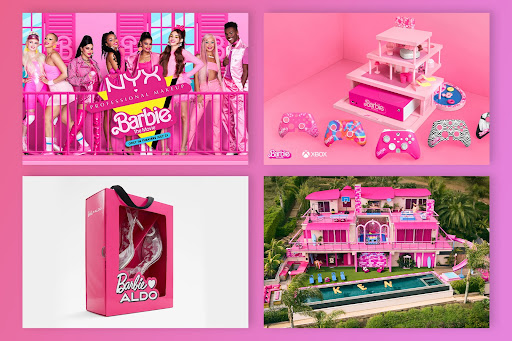A few weeks ago the long-awaited Barbie movie hit the big screen.
With an estimated budget of $100 million, we would be amazed if you haven’t seen at least one form of the brand’s bubble-gum pink marketing collateral that has been appearing absolutely everywhere.
Within their marketing strategy, Barbie has collaborated with a plethora of well-known brands, from NYX (cosmetics), Gap (clothing) and Aldo (shoes), to Airbnb (holiday properties), Xbox (computer gaming) and Ruggable (rugs).
These collaborations have helped the Barbie brand reach new audiences, increase brand awareness and boost sales.
Many of these collaborations have also sparked major talking points within the media and the general public.
I mean, who wouldn’t want to win a trip to Barbie’s REAL Dreamhouse courtesy of Airbnb?
It would appear Barbie collaborated with a brand from every major sector under the sun.
But what if you don’t have a marketing budget in the millions?
The Power Of Partnerships – Barbie Edition
If you have kept up with our latest newsletters you will be aware that at Twenty One Twelve, we are passionate about harnessing the power of partnerships.
So we wanted to take this opportunity to shed on the best ways to create mutually beneficial brand/business partnerships – even if you don’t have a ridiculous budget.
- Having Complementary Services
Partnering with businesses in different industries that share the same target market can be highly effective.
For example, wealth managers, solicitors and accountants can be great strategic partners.
Just as less obvious partnerships can be highly effective, such as our collaboration between FOMO Mortgages and Lastminute.com!
A bit like how Barbie has collaborated with NYX and OPI, both are from different industries (cosmetics rather than toys), but both share a young, female demographic.
- Having Different Target Markets
Collaborating with businesses that offer the same service but target different markets can create a reciprocal non-financial relationship that benefits both parties.
For example, SME corporate lawyers can collaborate with big business corporate lawyers, generating referrals and expanding their clientele.
Despite not collaborating with any direct competitors (toy brands), Barbie’s partnerships with lifestyle such as Ruggable, have targeted an older and more professional demographic.
- Being Non-Competitors
Partnering with businesses in the same industry but with specialised and non-competitive services can open up a plethora of new opportunities.
For instance, connecting an international HR expert with UK-only HR experts can enhance the value proposition and provide comprehensive solutions for clients.
For Barbie, Airbnb is a perfect example of this. With completely different target markets and products/services, this unique campaign was effective at increasing brand awareness for both parties.
Want to harness the power of collaborations for your business, but with less pink plastic? Then feel free to contact us!


